English Language Learning
This post is also available in: Spanish

English proficiency is increasingly recognized in the international community as a critical tool for competitiveness and growth in the global economy. Interest in learning the language has grown exponentially in Latin America, with many countries making considerable efforts to improve English proficiency through policies and programs.
However, test results indicate that English proficiency is very low. The educational system is simply not producing students with adequate levels of English proficiency. Schools are often unable to provide the necessary English classes, while those that do exist are often of poor quality. Learning opportunities outside of the educational system, although increasingly available, are unable to make up for deficiencies within formal schooling.
How can countries implement effective policies and programs to improve learning levels? Our report, English Language Learning in Latin America, analyzes ELL policies, teacher effectiveness, and learning programs, and identifies best practices and weak areas throughout Latin America. In Work in Progress: English Teaching and Teachers in Latin America we pose the question who are English Teachers? What are their qualifications? Both reports highlight different sectors that need to be addressed to improve English language policy and programs in the region.
English for Employment – English Language Learning in Technical and Professional Education looks at English language instruction at the technical and professional education levels in six Latin American countries: Chile, Colombia, Costa Rica, Ecuador, Peru, and Uruguay. English Language Learning In Brazil presents an overview of English teaching in Brazil, examining the main national policies that regulate and inform English language learning and how they have been implemented. In addition, the study aims to exemplify how English teaching is guided from the national level to the state and municipal level, looking particularly at the states of Minas Gerais and Mato Grosso. Finally, in English for Employment in Mexico: Realities and Challenges the recommendations translates the findings of the entire study into possible mutually complementary paths, which could be implemented from different areas and scenarios of upper secondary and higher education and training for work in coordination with the labor market.
REPORTS

May 24, 2023 – English for Employment in Mexico: Realities and Challenges

March 15, 2023 – English Language Learning In Brazil
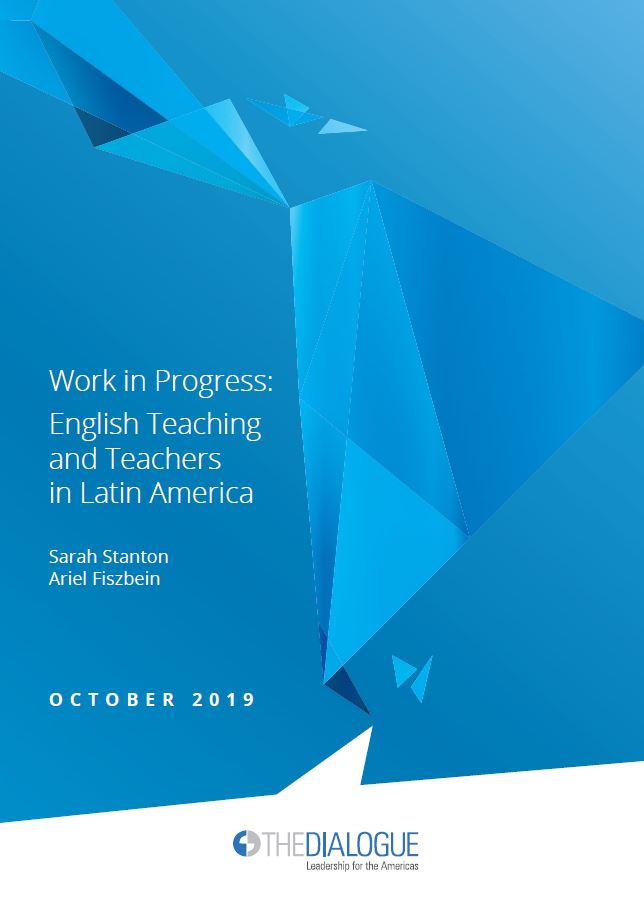
November 13, 2019 – Work in Progress: English Teaching and Teachers in Latin America
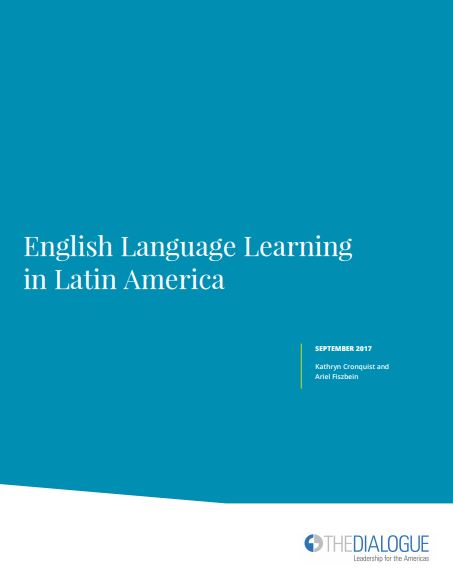
September 1, 2017 – English Language Learning in Latin America
INFOGRAPHICS
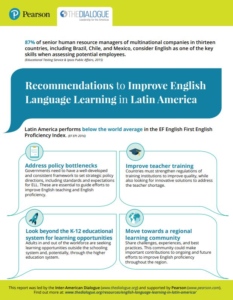 |
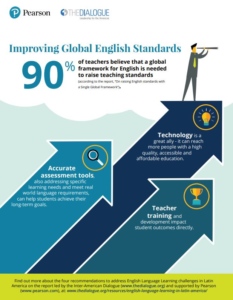 |
 |
RELATED EVENTS
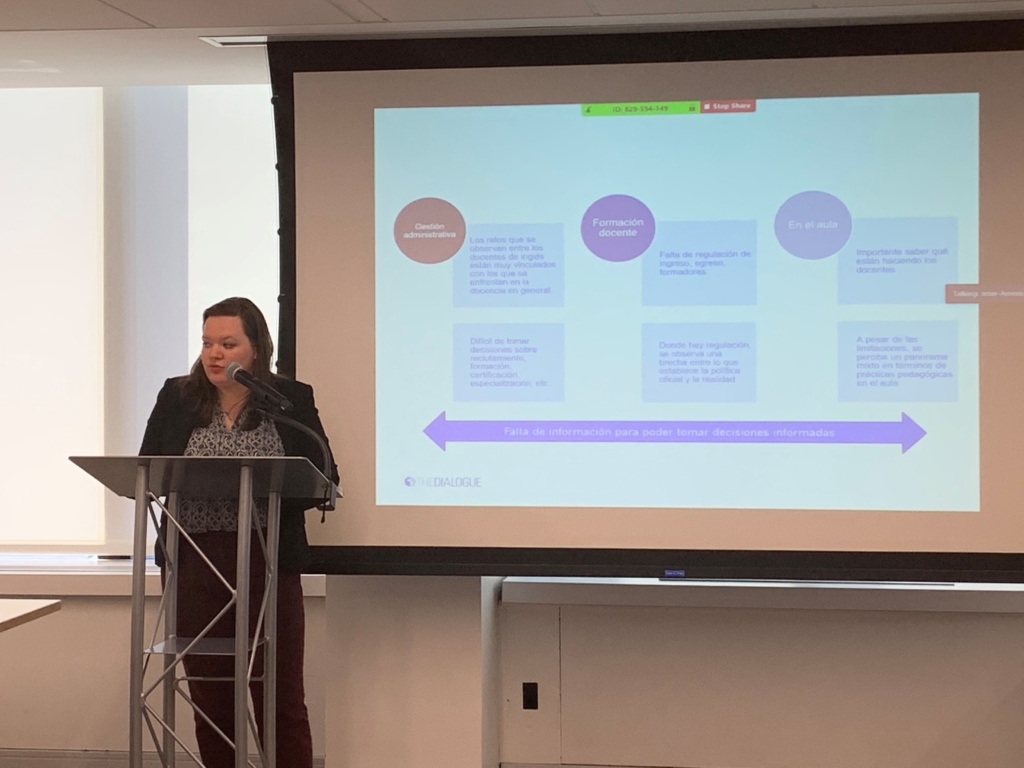
On November 18, 2019 the Inter-American Dialogue held a private round table with local expects on English language learning to discuss the new report Work in Progress: English Teaching and Teachers in Latin America.
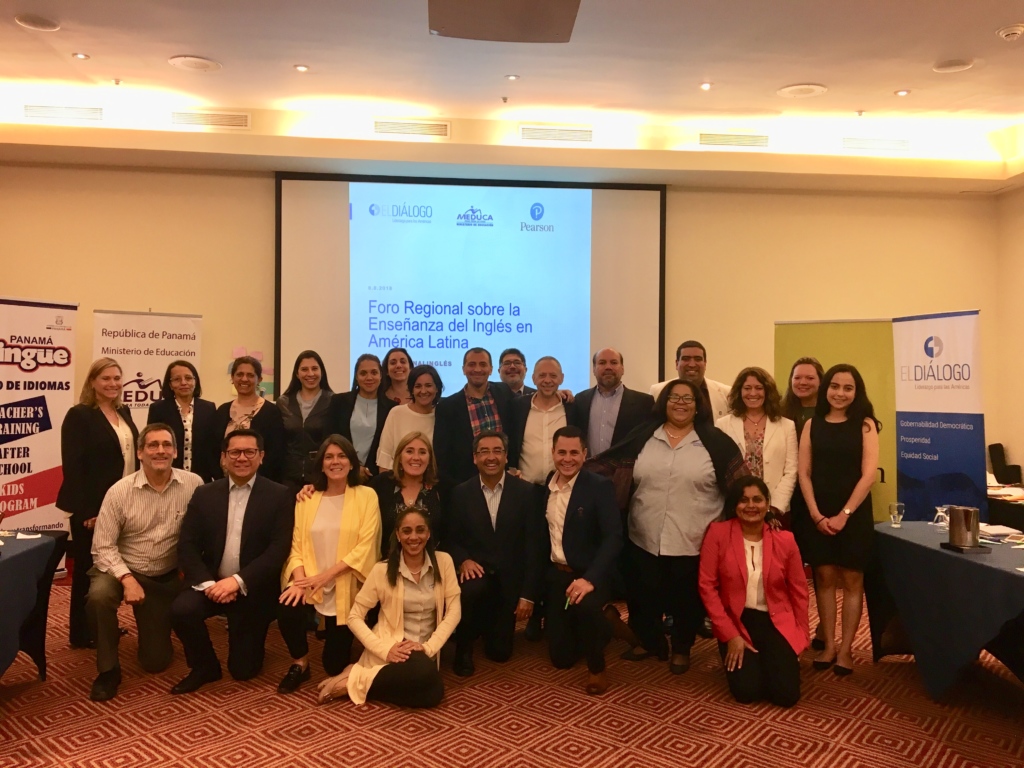
On August 8, 2018 the Inter-American Dialogue held the first Regional Forum on English Language Learning in Latin America in Panama City, in conjunction with the Panamanian Ministry of Education and with support from Pearson. The event brought together over 30 participants from 10 different countries to share their countries’ experiences with English language learning programs, in order to identify common challenges, lessons learned and opportunities for regional collaboration on this topic. Learn more here.
MORE EVENTS

On October 4, 2017 the Inter-American Dialogue and Pearson present the report Learning English in Latin America, which focuses on the challenges, opportunities and best practices of English language teaching in the region. Learn more here.
IN THE MEDIA
Expertos registran desafíos para la enseñanza del inglés – El Economista
Colombia y su preocupante nivel de inglés – Semana
La Argentina tiene el mejor nivel de inglés de toda América Latina – La Nación
México, entre los países de AL con bajo nivel de inglés – El Financiero





















